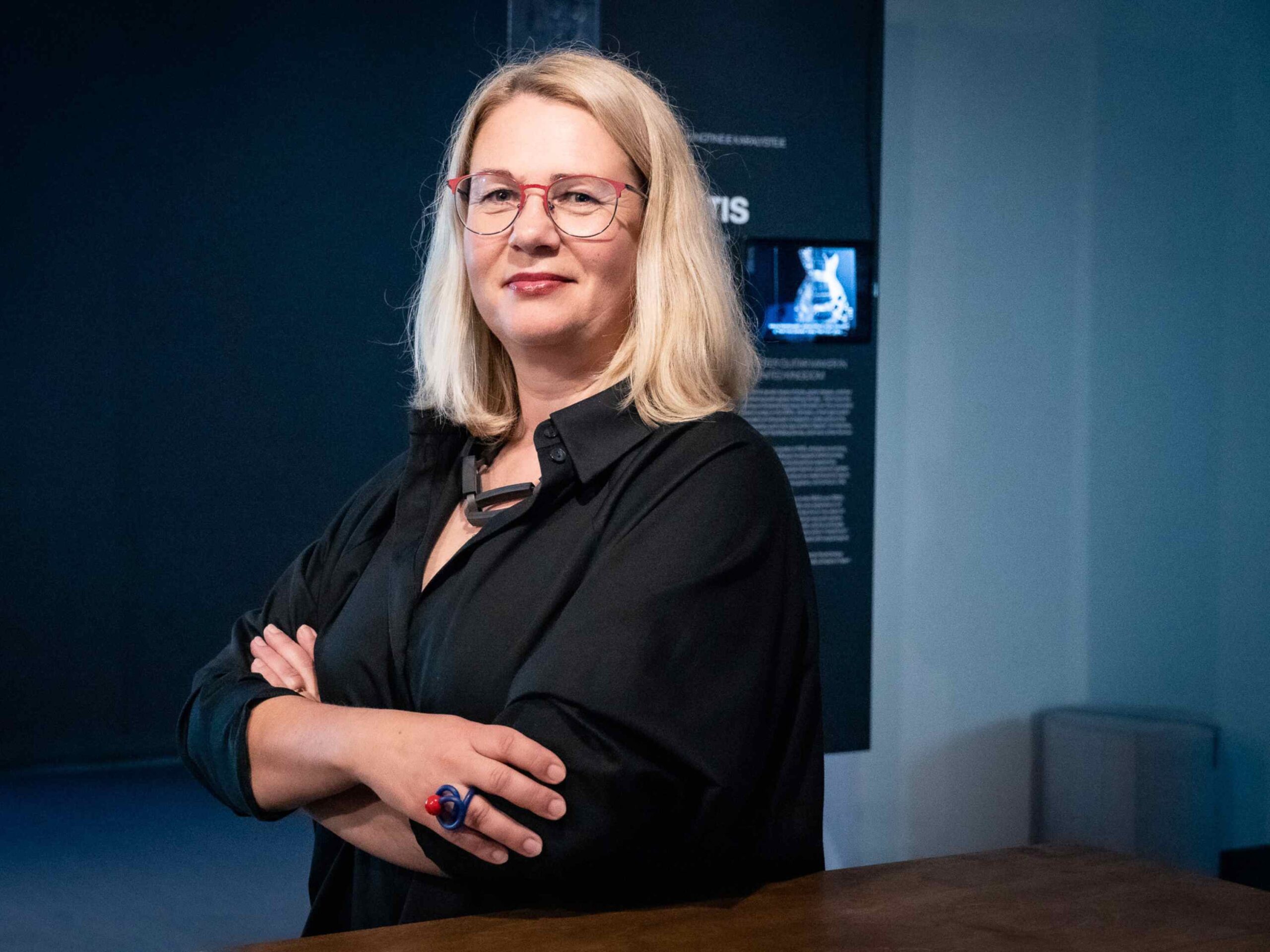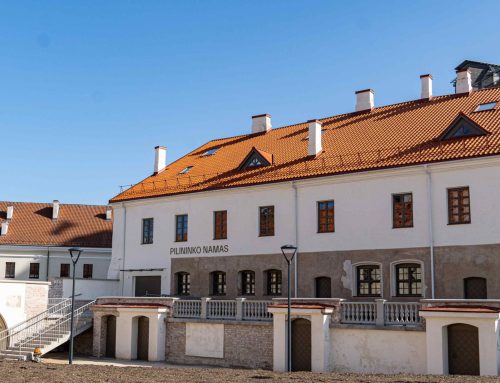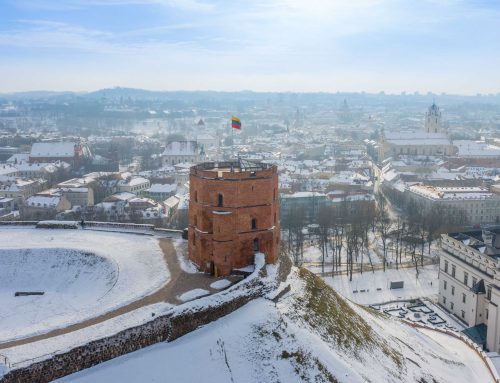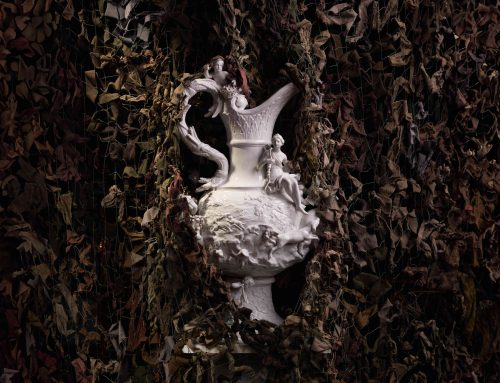Rūta Kačkutė: The Season of Lithuania in France – an Opportunity to Develop Long-term Relationships with Partners and to Strengthen our Sphere of Culture
2024 09 05
The National Museum of Lithuania (LNM) is presenting a multifaceted and multidimensional programme during the three-month Season of Lithuania in France. According to the Chief Executive Officer of the museum, Rūta Kačkutė, the Season of Lithuania in France is a unique opportunity not only to establish strong cooperative efforts with French art institutions but also to strengthen the ties within the cultural community of Lithuania.
In the opinion of Kačkutė, the Season of Lithuania in France is not merely about individual achievements or ambitions but also about joint efforts to present Lithuania and its culture in France in the most diverse manner possible; it’s about striking up long-lasting friendships and cultivating loyalty that is needed so badly in this stressful contemporary world.
In her interview, Kačkutė speaks about the museum-curated events, i.e., an exceptional exhibition of Kazys Varnelis at the Centre Pompidou, a discussion and training sessions for museum employees at the Louvre Museum, the exhibition “Ethnographic Op-Art” at the Vasarely Foundation, and the meaning of the Season of Lithuania in France in general.
– In your opinion, what is the meaning of the Season of Lithuania in France in general?
– This event is an exceptional, very important opportunity for Lithuania to focus on and to demonstrate its multifaceted, versatile, and multidimensional culture; starting from its historical tradition and finishing with contemporary art. It’s not merely a chance to strike up long-term, sustainable relations with different artistic and cultural institutions but also to reinforce the ties within the cultural community here, in Lithuania. We have a unique possibility to experience unity while pursuing a common goal – to show the rich culture of Lithuania.
What’s important is that not only will the residents of Paris, Aix-en-Provence, or Lyon visit a Lithuanian exhibition, performance, site-specific performance, or dance, after which Lithuania will acquire a different meaning in their eyes, but also that the very preparation for this event has inspired continuous, permanent cooperation among our creators, institutions, and French cultural institutions. Our exhibition curators have been learning from the French, and the French – from us. This is how we develop both professional and personal relations, get to know each other better; shared emotions and shared goals bring us closer. It’s a great gift, experience, and responsibility.
Even though the Season of Lithuania in France lasts for only three months, this will definitely have a long-lasting impact, and will be a valuable investment in the future made by our cultural community and the entire Lithuanian society.
The vision developed by the National Museum of Lithuania together with the Lithuanian Culture Institute curating the whole project of the Season is to present Lithuania as an innovative, creative, advanced, and conscious country when it comes to its history. We can offer cultural events of various genres and forms – from meaningful exhibitions to story-telling performances and discussions with museum professionals.
– The Season of Lithuania in France starts on September 13. The first LNM event is the opening of Varnelis’s exhibition “Kazys Varnelis. An Optical Classicist from Lithuania” (the curators Michel Gauthier (Centre Pompidou) and Indrė Urbelytė (LNM)) at the Pompidou Centre of Modern Art in Paris. This event is also part of the opening of the entire Season. In what ways is it meaningful and unique to present Lithuania to the French by concentrating on this creator of op-art?
– Kazys Varnelis is a unique op-art painter whose works are undoubtedly on a par with the most well-known masters of op-art displayed at the Centre Pompidou. We’ve been repeatedly hearing this from Michel Gauthier, the exhibition co-curator and one of the best experts of op-art. So, the opening of the LNM exhibition during the start of the Season in France will help etch the name of this artist in the canon of op-art. After all, the Western canon is now being reconsidered in the art world – various creators who have been overlooked, rejected, or forgotten due to political, historical or other circumstances are now being included in it. Varnelis – an optical classicist from Lithuania – must certainly be among them.
Varnelis’s life story mirrors a huge share of Lithuanian identity, history of Lithuania. Firstly, he comes from an extremely interesting and, at the same time, typical rural background. Thus, his life journey reflects the history of Lithuania.
The would-be painter was born in Alsėdžiai, Žemaitija. His mother, Teofilė Domarkaitė-Varnelienė, was a weaver, and his father, Kazimieras Varnelis, was a painter and a folk wood-carver of religious statues. Varnelis’s environment was incredibly artistic, deeply rooted in traditional Lithuanian culture; and I feel reluctant to separate or oppose the two elements in the painter’s personality. On the contrary, I’m willing to gently fuse his frame of mind with his mother’s fabrics and his father’s talent.
Varnelis is a child of the interwar period – the phase so dear to Lithuania and its history – forced to flee his motherland during the Second World War. He lived, worked, and made a living in the USA, and, in the end, donated most of his artworks as well as his huge art collection and library to Lithuania. You just can’t stop feeling proud of this artist. The world has to know about him – an energetic, ambitious, innovative, highly intellectual and generous person respectful of the art traditions around the world. His life as a war refugee and an emigrant also retells the history of our state – an overwhelming number of people were compelled to run away from their native Lithuania.
This exceptional Kazys Varnelis’s exhibition is perfectly-timed and meaningful. It’s an honour, great joy, and responsibility for the National Museum of Lithuania to display 16 artworks of this artist (both paintings and sculptures) in one of the most prestigious art institutions worldwide – the Centre Pompidou. And this is just the beginning of cooperation with the Pompidou; we are already preparing for a joint project where, in 2027, part of the op-art exhibits of the Centre Pompidou collection will be displayed in Lithuania.
We’re also happy that the exhibition of the MO Museum “Lithuanian Contemporary Art from the 1960s to Today” is going to be exhibited at the Centre Pompidou at the same time. Thus, three prestigious institutions are going to be the centre of attention of the opening of the Season programme, i.e., the Centre Pompidou, the National Museum of Lithuania, and the MO Museum. The exhibitions of our two cultural institutions in such an artistically significant venue as the Centre Pompidou is truly a historical achievement for Lithuania.
After the exhibitions, the Pompidou collection will be enriched with the artworks of Lithuanian artists. As you know, it’s next to impossible to acquire Varnelis’s works, so we’re very glad that thanks to the joint efforts of LNM and the artist’s son, one Varnelis’s artwork currently owned by the American Lithuanian collector Jonas Dovydėnas is going to be donated to the Centre Pompidou. The exhibition “Kazys Varnelis. An Optical Classicist from Lithuania” is going to be accompanied by the catalogue in French and English, where the artworks of our Lithuanian artist are presented in the context of such other well-known art creators as Victor Vasarely, Frank Stella, and Stefan Gierowski.
– On September 21-22, the storytelling performance The Songs of Partisan Women is scheduled in the Museum of the Resistance and Deportation in Grenoble. Why is this project important? In what ways is it significant in presenting Lithuania to France?
– The Songs of Partisan Women is a trilingual storytelling performance in French, Lithuanian, and Ukrainian. This poetical, musical, and highly moving narration combines the stories of French, Lithuanian, and Ukrainian women of the resistance movements. Some of them were and are armed with weapons, the others – with quills, songs, or lace. The performance reveals their bravery and strength, inspires others not to give up even in the most difficult moments. The initiator of this project is the storyteller and curator Milda Varnauskaitė, who, together with the French and Ukrainian performers, Ariane Pawin and Maryna Voznyuk, will retell the stories of other women.
An exhibit of the National Museum of Lithuania – a copy of a handkerchief embroidered in prison by a partisan messenger Pranė Vasiliauskaitė, made by the folk artists of the Ethnic Culture Department of the National Museum of Lithuania – is going to be used in the performance.
It is the presentation of this partisan war – this particular stage in the history of Lithuania and Ukraine – to the French audience that seems most meaningful and strongest in the current context of the Russian war in Ukraine, while the association with similar – French, Ukrainian, and Lithuanian – experiences, I hope, will offer the French the opportunity to feel us and our history as their own rather than something alien. The motto of the Season of Lithuania in France is “The Other Same,” and this performance is a perfect reflection of the motto.
– Another important event during the Season of Lithuania is the opening of the exhibition “Ethnographic Op-Art” (the curator Indrė Urbelytė) at the Vasarely Foundation in Aix-en-Provence, Southern France, on October 2. Lithuanian art enthusiasts were able to see this exhibition at the Kazys Varnelis House-Museum. Now – with slight changes – it is going to travel to the museum of the op-art master Victor Vasarely in France. What are the highlights of this exhibition?
– This is the second part of the exhibition at the Centre Pompidou housed in the museum of Victor Vasarely, the other op-art master from Hungary. The exhibition was inspired by the close link between Varnelis’s artworks and the patterns of Lithuanian bedspreads woven by his mother, Teofilė Domarkaitė-Varnelienė. The LNM weavers continue to nurture, restore, and newly recreate the works of folk craftswomen. We want to present this beauty, this meticulous work of Lithuanian weavers in the flow of history of Lithuania, to the French audience not as some household items but rather as an art born in everyday life.
Along with traditional Lithuanian bedspreads – or divonai, as they are beautifully referred to – we are also going to display Kazys Varnelis’s artworks. With this exhibition, we want to emphasize that the boundaries between traditional and modern art are not as strict as we imagined earlier. This exhibition serves as a synthesis of tradition and modernity; as a form of respect for the work and creative flair of weavers. Generally speaking, textile is becoming increasingly valued as a creative method globally, and is no longer regarded as only part of some “domestic” world.
The music written specifically for this project by the composer Matas Samulionis is also travelling to France together with the exhibition. The composer recorded the sounds of the weaving looms and spinning wheels in the weavers’ workshop of the National Museum of Lithuania. Exhibition visitors will be welcomed by the spherical sound of Samulionis’s musical interpretation, perfectly suited for this unique building designed by Victor Vasarely.
- “Ethnographic Op-Art” exhibition in Kazys Varnelis’ House-Museum. Photo by Silvestras Samsonas
- “Ethnographic Op-Art” exhibition in Kazys Varnelis’ House-Museum. Photo by Silvestras Samsonas
- “Ethnographic Op-Art” exhibition in Kazys Varnelis’ House-Museum. Photo by Silvestras Samsonas
– Early in the summer, the cultural community was delighted to hear that the National Museum of Lithuania would be collaborating with the Louvre for the nearest three years. How will this collaboration look like? The Season of Lithuania in France serves as a nice start.
– The purpose of the agreement is long-term cooperation between the museums; however, according to the established rules in the area of museums, such agreements are usually signed for a period of three years, and then are extended on the basis of specific projects and ideas to be implemented.
We’re starting with two important projects. Firstly, the training sessions MARTA for museum employees at the Louvre. The Louvre is not only the oldest museum in the world but it also has one of the best schools of museology. In its turn, LNM is in charge of raising qualification of the staff of the state and national museums of Lithuania. So, this project brings together all Lithuanian state and national museums and their employees. For us – as a museum – it is highly important to draw together the community of specialists, and to promote their development and cooperation.
The Lithuanian delegation is planning to analyse such topics as object collecting, collection formation, their management, and heritage protection. The latter one being the key topic both for us and for the Louvre.
The second direction of cooperation with the Louvre is a roundtable public discussion “Rethinking Identity: Museums and Heritage in the Context of War” in Paris. The debate is going to take place at the Dominique-Vivant Denon Centre of the Louvre. In it, the role of museums in the time of war in Europe – and more importantly in Lithuania – will be discussed.
The war in Ukraine initiated by Russia makes us reconsider sensitive issues of identity and borders in the spheres of culture and art. It brings back the painful memories of the times of occupation in this region. In times of crises, museums play a highly significant role of not merely informing the society or saving heritage but also of preserving cultural memory.
Professor Giedrė Jankevičiūtė, an art historian representing the Lithuanian Culture Research Institute; Indrė Urbelytė, an art historian from the National Museum of Lithuania; Aistė Bimbirytė, an art historian from the Lithuanian National Museum of Art; Mirosław Piotr Kruk, an art historian representing the National Museum in Krakow; and Ewa Manikowska, a Polish art historian from the Institute of Art of the Polish Academy of Sciences will be joining the discussion. We are also very glad to have a Ukrainian representative – Constantin Sigov, a professor of philosophy and religious studies at the National University of Kyiv-Mohyla Academy in Kiev – in the discussion. The discussion will be moderated by Maximilien Durand, the director of the Department of Byzantine and Eastern Christian Art of the Louvre Museum.
Together with the director of the Louvre, Laurence des Cars, who, by the way, knows Lithuania very well for when she was running the D’Orsay Museum, an exhibition presenting M. K. Čiurlionis and other symbolists from the Baltic countries was organised, we discussed the fact that this context of war in Europe brings us closer both as museums and as museum managers. We are very well aware of the emerging challenges of preserving the cultural heritage entrusted to us.
– What do you, as the head of the National Museum of Lithuania – expect most from the Season of Lithuania in France? What are your hopes today?
– I’d wish for a warm friendship, mutual understanding, partnership, and long-term cooperation between the Lithuanian and French cultural sectors.
I’d love to see more French people learn more about Lithuania, experience that emotional connection, and perhaps even consider visiting Lithuania. This is how emotional ties are established, empathy and simple human relationships are developed. This is our final destination, meaning that this Season is just the beginning of the journey.
I do hope that the French will see Lithuania as a creative, innovative, and united country, and will pay attention to our unique, beautiful and yet challenging history. Also, that the time with the French audience will help us convince our French partners to support Ukraine in this difficult time both for Ukraine and the entire Europe.
- Rūta Kačkutė. Photo by Augustinas Bėkšta
- Head of the Centre Pompidou Laurent Le Bon, Rūta Kačkutė, Indrė Urbelytė at a meeting at the Kazis Varnelis House-Museum. Photo by Augustinas Bekšta
- Laurent Le Bon’s visit to the Kazys Varnelis House-Museum. Photo by Augustinas Bėkšta
- Kazys Varnelis. Photo by Jonas Dovydėnas













